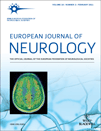Clinically suspected fibrocartilaginous embolism: clinical characteristics, treatments, and outcomes
This is a Continuing Medical Education article, and can be found with corresponding questions on the Internet at http://www.efns.org/EFNSContinuing-Medical-Education-online.301.0.html. Certificates for correctly answering the questions will be issued by the EFNS.
Abstract
Objective: To study the frequency, demographics, clinical characteristics, and outcomes of patients with an antemortem diagnosis of fibrocartilaginous embolism (FCE), a rare cause of spinal cord and cerebral infarction because of the presumed embolization of nucleus pulposus material into the vascular circulation.
Methods: We retrospectively reviewed the institutional experience of patients who received an antemortem diagnosis of FCE by their treating physician at the Mayo Clinic (Rochester, MN, USA) from 1997 to 2009. All patients underwent laboratory, radiological, and clinical exclusion of other possible and related diagnoses.
Results: Of 164 patients with acute spinal cord infarction seen during the study timeframe, 9 (5.5%; 95% CI 2.5, 10.2%) met inclusion criteria for high likelihood of FCE (6 men, 3 women; median age 46 years old, range 21–64). All patients were severely affected (median modified Rankin Scale 4, median Barthel index 45; mean time to evaluation 57 days). One patient (1/9) experienced concomitant cerebral infarction. No patients had noticeable improvement from steroid treatment.
Conclusion: The diagnosis of FCE in life is common at this referral center, accounting for 5.5% of all cases of acute spinal cord infarction seen. Although FCE is a postmortem diagnosis, we propose clinical criteria for FCE in life to better characterize the relatively high number of patients with unexplained ischaemic myelopathy.




